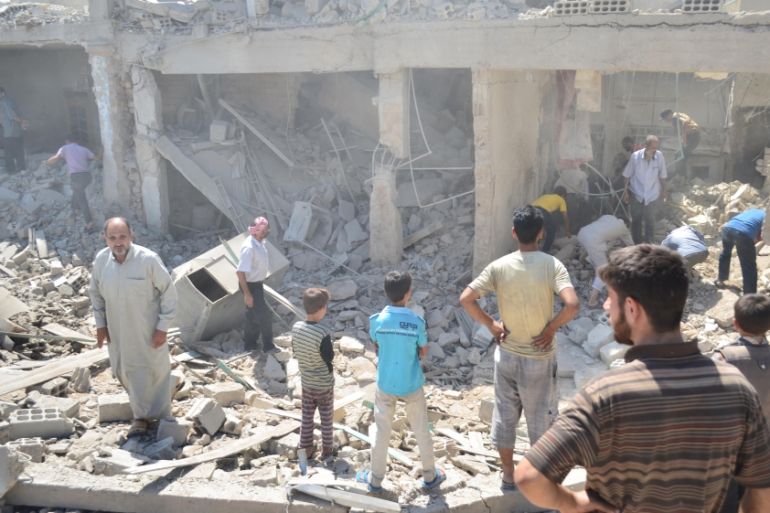Syria deal: ‘Population swap’ or ‘sectarian cleansing?’
Rebels halt talks with regime and Iran over a peace deal in two areas, accusing Tehran of trying to alter demographics.

The Syrian opposition has broken off talks with the government, which was being represented by its ally Iran, over a peaceful settlement regarding two frontlines in the country.
The opposition accused Tehran of attempting to change the demographics in areas close to Damascus with the goal of partitioning the country.
If an agreement had been reached it would have been the first time the warring sides had agreed to transfer besieged communities as part of a deal in the Syrian conflict.
The mainly Sunni residents of Zabadani would have been be taken to rebel-controlled areas in northern Syria, while the Shia residents of Fua and Kefraya would be taken to territories under the control of the regime
A population swap. Some may call it ethnic cleansing.
The government and its allies, Iran and the Lebanese Shia movement Hezbollah, have been accused of moving forward with plans to cleanse areas from opponents in what is now being described as their “core region,” which includes Damascus, Homs and the coastal cities.
“Iran insists on displacing civilians from Zabadani and nearby areas which we refused,” Ahrar Al Sham, a rebel group leading the negotiations on the opposition side, said after announcing it would no longer abide by a ceasefire after negotiations failed.
“The plan for sect based displacement – emptying Damascus, its surroundings and all the areas along the border with Lebanon of Sunni presence is now in its final stages.”
Zabadani is an important town and has been held by the rebels for the past three years.
The army and Hezbollah launched an offensive to recapture it in July.
It is the last significant rebel held area along Lebanon’s border and would be vital to consolidate control of the “core region” and to protect Damascus.
Thousands of barrel bombs, rockets and artillery rounds landed in Zabadani in the course of the offensive to take the town and rebels are now trapped inside.
Changing trajectory of conflict
On Wednesday, a ceasefire was announced in Zabadani and on another frontline in Syria, with rebels agreeing to stop their assault against Fua and Kefraya.
Those two villages have managed to hold out after almost all of the rest of the northern province of Idlib fell into opposition hands.
The thousands of people there are government supporters. They are also Shia and they have been under siege for months.
The warring sides were negotiating a safe passage for rebels to leave Zabadani and allow the people of Fua and Kefraya to move to a regime controlled area.
But according to the opposition, the government had another condition – civilians and not just the fighters must leave Zabadani and go to territories under rebel control.
“If this happened it would be the first time a substantial transfer or swap of populations would take place in the Syrian conflict,” Charles Lister, from the Brookings Institution, said.
“It is a significant shift in terms of the trajectory of the conflict. We have seen for some time pro-regime forces focusing on securing strategically valuable territories – some of them around Zabadani.”
While both the government and the opposition publicly reject the partition of Syria – on the ground there is a different reality.
Syria is carved out into five zones – the regime controls an enclave in the west, ISIL in the east, the moderate opposition in the south, the Kurds in the northeast and the rebel alliance, which includes the al-Qaeda-affiliated Nusra Front, in the north.